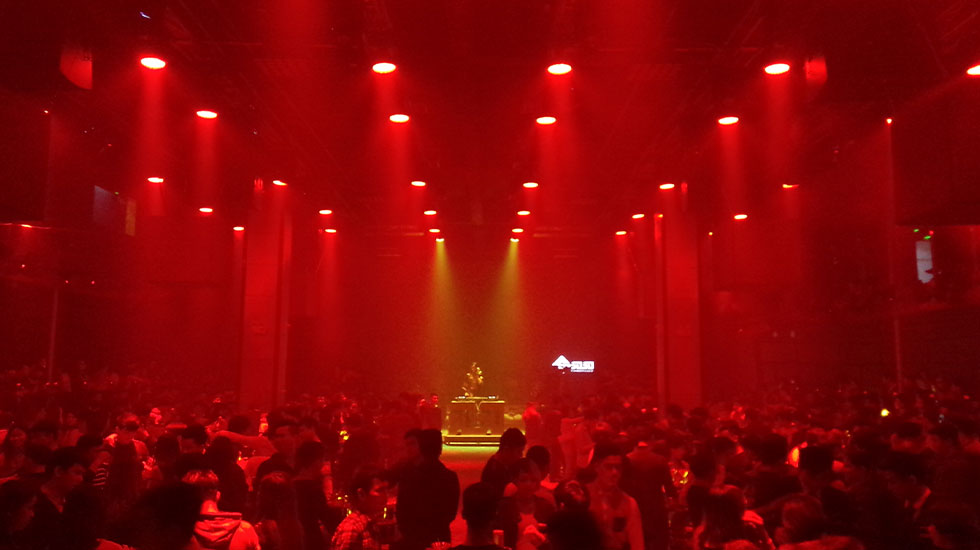The types and characteristics of stage lights are mainly to create different visual effects, set off the stage atmosphere, and enhance the audience’s visual experience. Stage lighting is not just lighting, it can also convey emotions, shape scenes, and enhance the artistry of performances through different lamps, light angles, colors, and intensities.
1. Beam Light
Features: The beam produced by the beam light is very concentrated, the light diameter is small, the brightness is extremely high, and the projection distance is long. It is usually used to create a strong beam effect, especially to form a visible light column in stage performances and concerts.
Application: It is suitable for highlighting a certain position or character on the stage to create a sense of visual impact.
2. Spotlight
Features: The light can be concentrated while adjusting the aperture size, the edge of the light spot is clear, and it is suitable for illuminating a specific area or actor, and the light is soft and not dazzling.
Application: It is often used for key lighting, such as the actor’s face and local lighting of objects, to shape the primary and secondary sense of the stage.
3. Floodlight
Features: The light is relatively dispersed, with a wide range of illumination, uniform and soft light, without strong shadow effects, suitable for overall stage lighting.
Application: Used for large-area lighting, such as stage background and scene layout, to fill light and increase stage brightness.
4. Followspot Light
Features: The light is strong and can accurately track the actor’s movements. It is usually equipped with an operator to control the direction and brightness in real time, and is often used to highlight the main actor or host.
Application: Used to dynamically follow the main characters and highlight the actor’s performance on the stage.
5. Wash Light
Features: The light is soft, and the color of the light can be directly changed through color filters or LED light sources. It is used to add color atmosphere to scenes or characters. Wash lights have a large light coverage range and can create a variety of stage atmospheres.
Application: Used to change the color effect of the entire stage or to set off a specific emotional atmosphere.
6. Effect Light
Features: The light is complex and changeable, and a variety of visual effects can be created through special optical elements, such as patterns, dynamic beams, color changes, etc. Common effect lights include laser lights, LED matrix lights, etc.
Application: Mainly used to render scenes and create special visual effects, such as laser shows in concerts and scene transitions in stage plays.
7. Backlight
Features: The light shines on the actors or objects from behind, making the subject form a silhouette effect in front of the audience. Backlight can increase the three-dimensional sense of the characters and highlight the outline.
Application: Used to create a dreamy and mysterious atmosphere, or to highlight the outline of characters or objects.
8. Sidelight
Features: The light shining from the side of the stage can highlight the side outline of the actors or objects and make the stage more layered. Sidelight is usually used to break the flatness of the front light and enhance the spatial effect.
Application: Commonly used for dramatic lighting on the stage to enhance the three-dimensional sense and layering of the characters.
Common Features of Stage Lighting
1. Color change:
Modern stage lighting mostly uses LED lights or adjusts the color of light through filters, and can quickly switch different colors at any time according to the needs of emotions or plots. Color not only changes the visual experience, but also conveys different emotional atmospheres.
2. Adjustable light intensity:
Stage lighting can adjust the intensity of light to achieve a change from light to dark, shaping the time and space changes on the stage or rendering a certain emotional atmosphere.
3. Directionality of the light beam:
Stage lighting can accurately control the direction of the light beam and can project light from different angles, such as the front, top, side or back, to highlight different characters or objects in the scene.
4. Patterns and effects:
By installing pattern pieces or pattern wheels, stage lights can project complex patterns, such as stars, leaves or other abstract graphics, to create specific scene effects or set off atmospheres.
5. Dynamic changes:
Stage lighting can be controlled by programs to achieve dynamic changes in light, such as the movement of light beams, gradual increase or decrease in brightness, rapid switching of colors, etc., which are widely used in live performances such as concerts and musicals.
Summary:
Stage lights have various types of light, each with unique application scenarios. By cleverly using different types of lamps and their light characteristics, stage designers can create highly artistic and emotionally expressive stage effects, greatly enhancing the audience’s visual experience and emotional resonance.
